|
In this newsletter:
- Christmas greetings
- Celebrating Bracknell Forest's natural wonders
- Managing our marvellous meadows
- A3095 Wild Way project
- Improvements to footpaths in Sandhurst
- Wildlife watching
 Playing in the snow, at South Hill Park
Thank you to everyone who has taken part in our photographic competition.
It was a record breaking year for entries, with 230 wonderful photos submitted by 36 talented amateur photographers. It's evident how our competition theme has captured residents' imaginations.
 Our overall competition winner was Jessica McKean from Jennett's Park for her amazing photo of a deer at pre-winter dusk, at Peacock Meadows.
The top prize-winning entries are shown below. The full competition results are available on our website. Congratulations to all our finalists and thank you to our competition sponsors.
 Second place: Sunrise at Cabbage Hill, by Gareth Fish.
 Third place: Stunning morning for a run, by Katie Ackling.
 Special award: Newt Reserve (Warfield), picture of my daughter, by Nasrin King.
Sheep grazing at Peacock Meadows
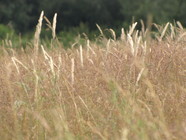
We are introducing sheep grazing at Peacock Meadows, as a way to improve the wildlife value of the grassland.
Grazing with livestock is a traditional form of meadow management. It reduces competitive grasses and helps wildflowers to flourish.
The sheep will be in a designated area in a northern section of the meadows, which is enclosed by livestock proof (electric) fencing. Please keep dogs under close control when near this area, and do not allow them to enter.
|
Re-wilding a churchyard meadow
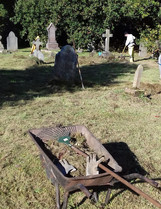
Wildlife has been given a boost at St. Michael’s and Mary Magdalene Churchyard thanks to the support of local volunteers and Continental Landscapes Ltd (CLL).
CLL cut and collected the grass this autumn at a discounted rate, as part of their community support work. This paved the way for Easthampstead Living Churchyard group and local volunteers to rake the meadow and sow a native wildflower seed mix.
The activities, which were led by Biodiversity Officer Marlies Boydell, will encourage a richer diversity of wildflowers at this meadow, which is one of only a handful in the borough that have never been artificially fertilised.
|
We are working with our highways and transport division to improve the natural environment along the A3095 and in neighbouring communities.
We are delivering environmental improvements, while offsetting the essential removal of some trees, as part of the A3095 Crowthorne Road improvement works.
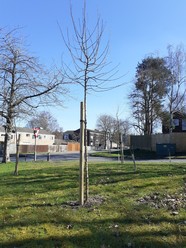
Examples of improvements we're carrying out include:
- creating and enhancing wildflower meadows
- planting native trees (pictured)
- establishing new community orchards
- creating ponds and wetland habitats
- planting native hedgerows
- planting bulbs along road verges
Further information about the A3095 Wild Way project is available on our website.
|
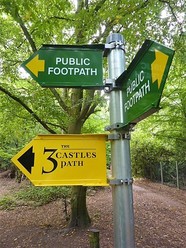
We recently worked with Network Rail and The National Trust to permanently divert a footpath through Ambarrow Hill. The diversion was required following the closure of a railway crossing (Grid Ref SU 82681 62707) for safety reasons. The diverted footpath now follows the footbridge around 300 metres further north.
We have also established a new footpath (Sandhurst footpath 27) at neighbouring Ambarrow Court that better links the nearby footpaths, and follows the route of the Three Castles Path. This is a long distance route that runs for 60 miles (96.5 kilometres) between Windsor and Winchester.
The new footpath link was a recommendation of the Bracknell Forest Local Countryside Access Forum, who are an independent group that advises us on the improvement of public access to the countryside.
Further information about local walking routes can be found on our website.
|
Fungi
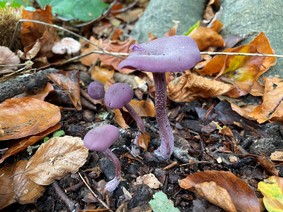
Our heritage parks team spotted this beautiful amethyst deceiver fungus at South Hill Park this autumn.
This fairly common, but beautiful species can be found in the leaf litter of mixed woodland from mid summer to early winter. It is named for its distinctive purple colour, which can fade during dry spells or when it ages.
Fungi are important, as they help to recycle nutrients from dead or decaying organic matter, and provide food and shelter for animals.
|
Birds
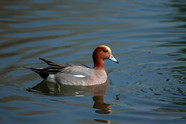
For bird watching enthusiasts, Shepherd Meadows and Horseshoe Lake in Sandhurst are good places to visit during the winter, as birds flock to the sites to take advantage of the mild and wet conditions.
Flocks of siskins, meadow pipits and thrushes can be found around the meadows, and a variety of waterfowl such as ducks (widgeon, gadwall), geese and swans visit the Blackwater River and nearby ponds and lakes.
A recent improvement project to Horseshoe Lake island has helped wetland species on site to thrive this year. Species such as the common tern, oystercatcher and the rare little-ringed plover were spotted using the new flat shingle areas, which were created as a refuge and breeding habitat for wetland birds. The project, which was led by our rangers, has received praise from Natural England and a local ornithological group.
|
|